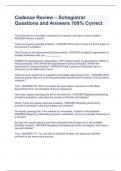Samenvatting
Complete summary of Marketing Communication 2021/2022 (grade 8)
Detailed summary of Marketing Communication. For each week: all the lectures and seminars in combination with the articles. Course in 2021/2022. Grade 8. Good luck!
[Meer zien]













